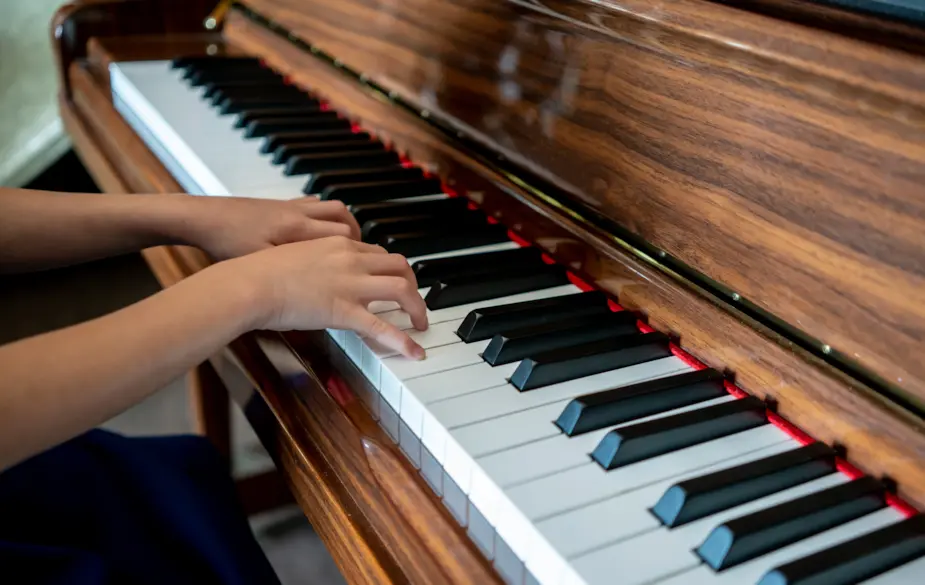19 June 2019
|
Woodworms may not be something you want to think about, but they are definitely something you need to watch out for!
With regular maintenance, it’s possible for your piano to give top quality service for up to 50 years.
However, the fact that a majority of pianos are made with wood brings a lot of risks to the table. For starters, the levels of humidity and temperature in and around your piano can play a great role in its lifespan as it can have dramatic effects on the wooden pieces of the piano.
There is one risk to pianos that many pianists forget about.
Woodworms.
We know it’s not a topic anyone likes to talk about of course (especially for the squeamish), but it is definitely something you need to watch out for as they can cause irreversible damage to your beloved piano. We are going to talk you through what a woodworm is, signs you need to look out for when inspecting your piano, and how to go about fixing a woodworm issue should it arise.
Ready? Let’s dive in.
What exactly is a woodworm?
You may have already deciphered what a woodworm is from its name: a woodworm is a wood-eating beetle. They usually emerge from wood in search of a mate between April and October, so it’s crucial to remain alert to the possible presence of these wood-eating creatures in a piano. Woodworm, despite the name, are not actually worms but are the larvae stage of wood-eating beetles. After the beetles mate, they will look for a quiet place to lay its eggs within the wood. When the larvae hatch from these eggs, the larvae devour their way through the wood for two to five years. At this stage, the woodworm will eat their way out of the wood in search of a mate and begin the life cycle all over again.
Pianos are particularly susceptible to woodworms, so we can’t stress enough how important it is that ALL OF YOU know how to identify signs of woodworms, and how to eliminate the infestation before extensive damage can be done to the piano.
What signs do I need to look out for when inspecting my piano?
Presence of dead or alive beetles
Any presence of dead or alive beetles in close proximity to the piano or emerging from holes in the piano nearly guarantees that there is indeed an infestation.
The “common furniture beetle” is one of the most common woodworm beetles to find in the U.K. These beetles are small and brown in colour and are known to die shortly after mating. Therefore, it is not unusual to find dead beetles near the infested wood.
Burrow holes and tunnels
Small exit holes in the wood, similar to holes found in a dart board, would suggest the piano is either infested or has previously been infested with woodworms. Burrow holes are evidence of where the wood-eating beetles have emerged from the piano to begin mating. It is important to remember that the infestation may no longer active as some or all of the beetles have burrowed out of the wood. Exit holes may not be a cause for concern as it isn’t possible to determine by exit holes alone whether or not there are still larvae beetles inside the piano.
If you notice burrow holes in the piano, then remain alert for the presence of raised “tunnels”. These tunnels show the journey taken by larvae beetle as it devours its way through the piano.
Crumbly Edges
It is critical not to leave the infestation untreated and this will cause the infestation to worsen as the woodworm begin to multiply over time. This will inevitably lead to an increase in the number of burrow holes near the edge of the piano, causing the wood to appear crumbly as a result. Crumbly edges indicate the wood in the piano has been infested with woodworm for a lengthy period, and should, therefore, be treated immediately to avoid further damage.
Fine Powdery Dust
If you notice fine powdery dust alongside burrow holes, this would indicate that the woodworm infestation is in fact active. This powdery dust is known as ‘frass’, and is the faeces left behind by the wood-eating beetles.
Help! I have noticed some signs of woodworms in my piano
Any piano that has been infested with woodworms should be examined to determine the extent of the damage that has been caused by the beetles. However, depending on how soon the infestation is treated, the damage to the piano may be minimal. If you suspect your piano has at any point been infested with woodworms, it is strongly advisable to have the piano treated and to determine if the wood-boring beetles have spread to other areas in your home.
So, if you see signs of woodworms in and around your piano, contact your local exterminator immediately!
This article was written by Jake Ryan of Wise Property Care
Want to try Pianist magazine before you buy? Get your FREE sample here







